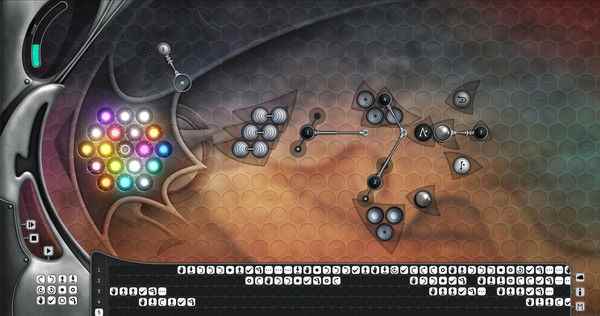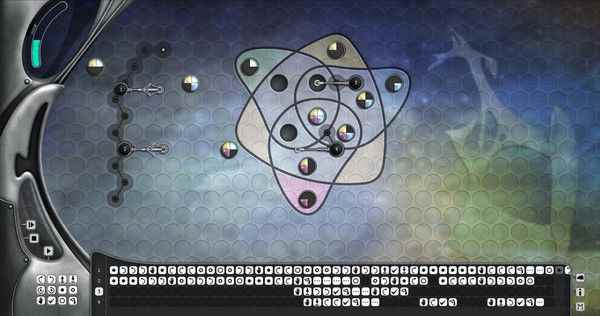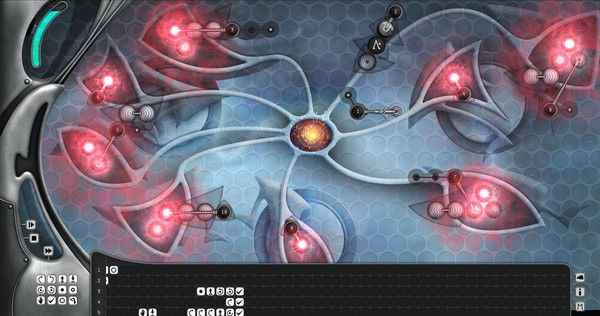In our Velone review content, which is in the automation type, we take a look at the general operation and different structure of the game.
Velone review: If we shake our hands in the game world, we encounter games that are similar to each other or that we always encounter. Of course, there are games that appeal to more niche audiences, as well as being quite different from time to time. The game called Velone, signed by Dice 21 and distributed by Daedalic Entertainment, is one of the productions in this genre. We can say that it is an automation type game in general terms, but it also includes a coding logic in itself. Now let’s take a look at the general dynamics of this different game together.
Velone review
Velone opens with a process that briefly tells the story of the game. We learn the story of the game through the individual dialogue of a character named POL. Stating that his people are about to die, POL explains that they are from a planet called Velone, which gives the game its name, and that there is a gel inside this planet.
Through this gel we learn that they provide energy and without its proper distribution the planet cannot survive. A meteorite that hits the planet Velone, on the other hand, collapses the entire system they have, so in short, it is in charge of supplying and distributing resources. Our task in the game is to properly extract and distribute these resources for processing.

First of all, Velone is a really difficult game to get used to and solve. For this reason, a very important training section has been added to the game. If you skip this training section, I can say that I am sure that you will look at the screen avel avel. Because even when I completed the training part, I must say that I experienced a similar situation when I switched to the main game. Even if you complete all the training tasks, it takes a lot of time to solve the vehicle layout and automation system, which I will explain shortly.
As soon as you open the game, you can see that there is a huge area in the middle, apart from the HUD screens scattered around. The general logic of the game is to place the tools given to you properly in this area and ensure their automation. In order not to confuse you too much, I want to talk about the toolset first.

In the toolkit section, apart from some special vehicles that we can call automation keys, many vehicles such as launching, moving on the rail or teleporting are included. This toolkit, which starts out simple at first, gets more complex as you progress. Let’s explain through an example; For example, you have a factory and you want to make a simple automation here. Think of the process you need to do as a mechanism that will lift the incoming products and put them on the rail system and reach the end of this road. In other words, an arm-like device will take the product and put it on the rail system and carry it to the end of this system. there is a similar logic in the game. Of course, as I said, the operation, which is simple at first, starts to burn your brain with the different systems intertwined in the next stages.
Of course, the part that I have told so far is actually the simple part of the game. After placing the tool, your work is not over because you must add automation to these tools. The automation process works down the channels just like a video program. The more key vehicles you have in the playground, the more channels you see below. You can compare this automation part to the programming games that we have seen before. In a way, you are asked to write an automation system in each section with the programming language that the game gives you.

Let’s continue with the example I gave above. For example, let’s consider an automation for the arm that takes the product and puts it on the rail system. The arm will pick up the product, lift it up and turn right and drop it onto the rail system. For this, you need to sort all the commands in the programming part one by one, including the turns. When this process is repeated, you can even throw a loop, that is, a loop key. Look, this was just the simplest example I told. When dynamics such as throwing and teleportation are included in the work, the automation system of the game really becomes more challenging. Moreover, as the products to be delivered change, you have to change them with different dynamics on the playground.
To be honest, Velone is a difficult game to explain with its dynamics. It has a structure that focuses more on experience and you will start to unravel its dynamics as you play. Its visual style is simple but designed in a way that does its part. I can say that it is a game that pushes you to think and to set up the automation system that will fulfill the tasks you encounter, rather than an enchanting visual.

In conclusion, as I mentioned at the beginning, Velone is a production that appeals to a niche audience. If you have played and liked game design-style productions or this type of automation, which has a programming logic in itself, you can take a look at the Velone game.
